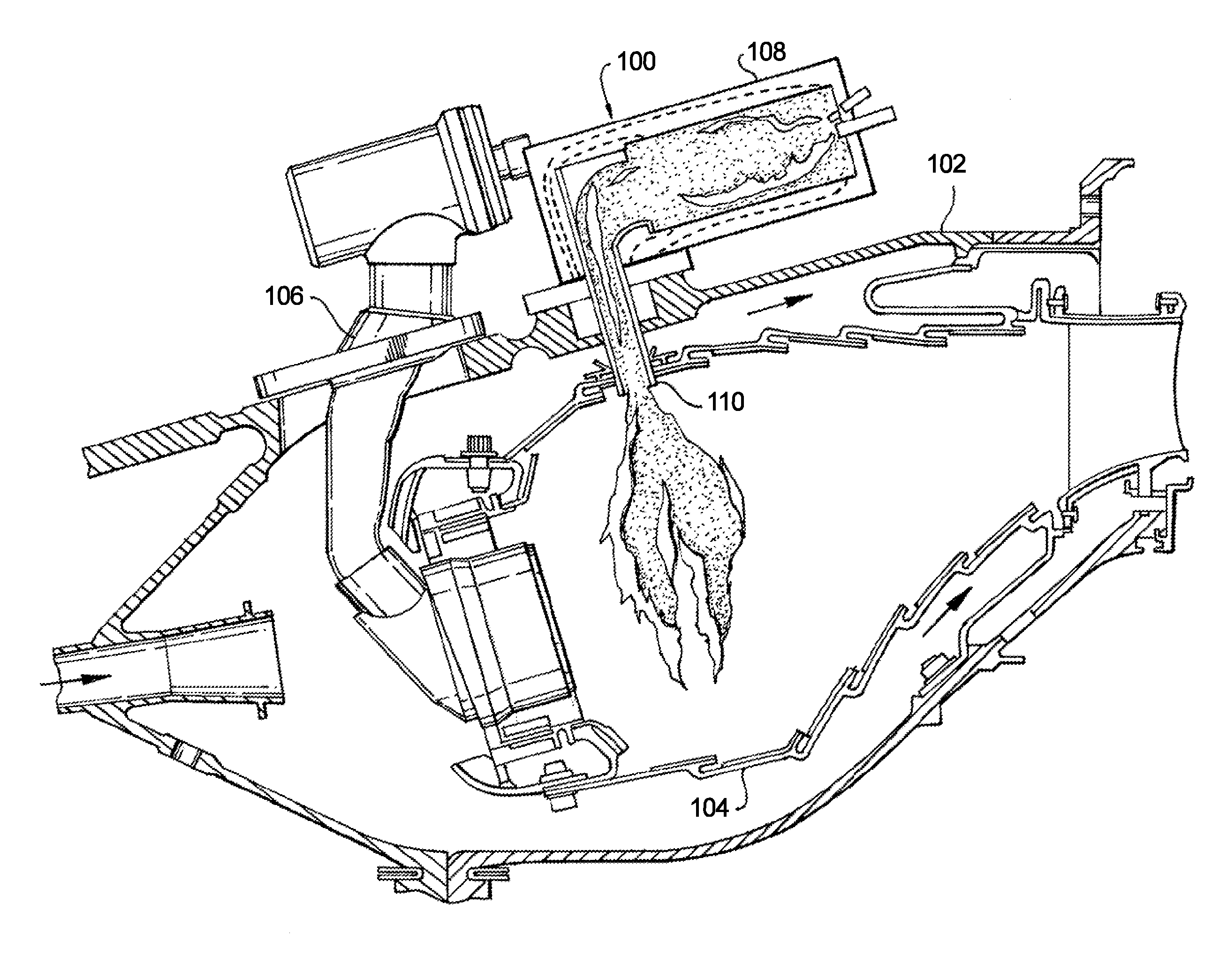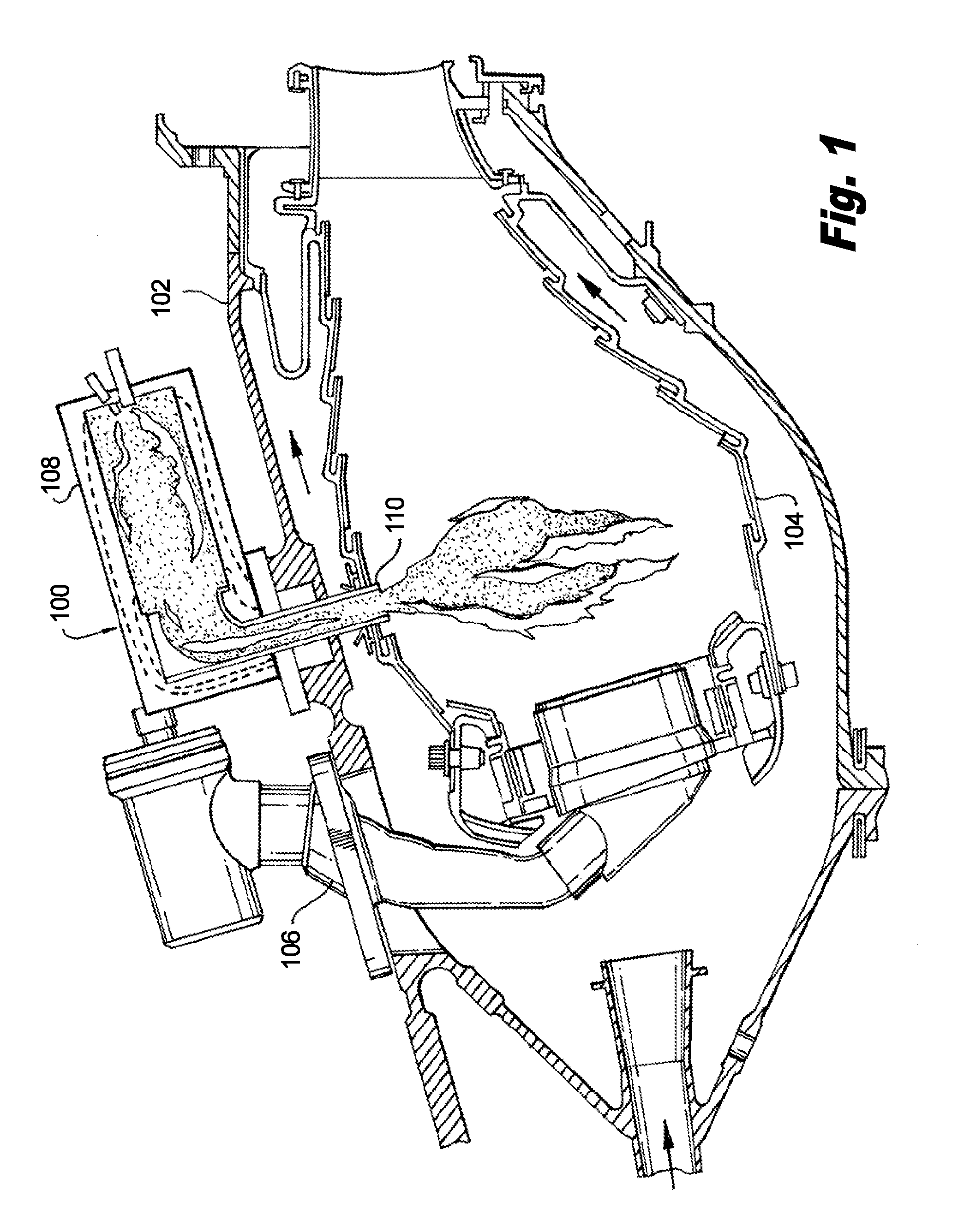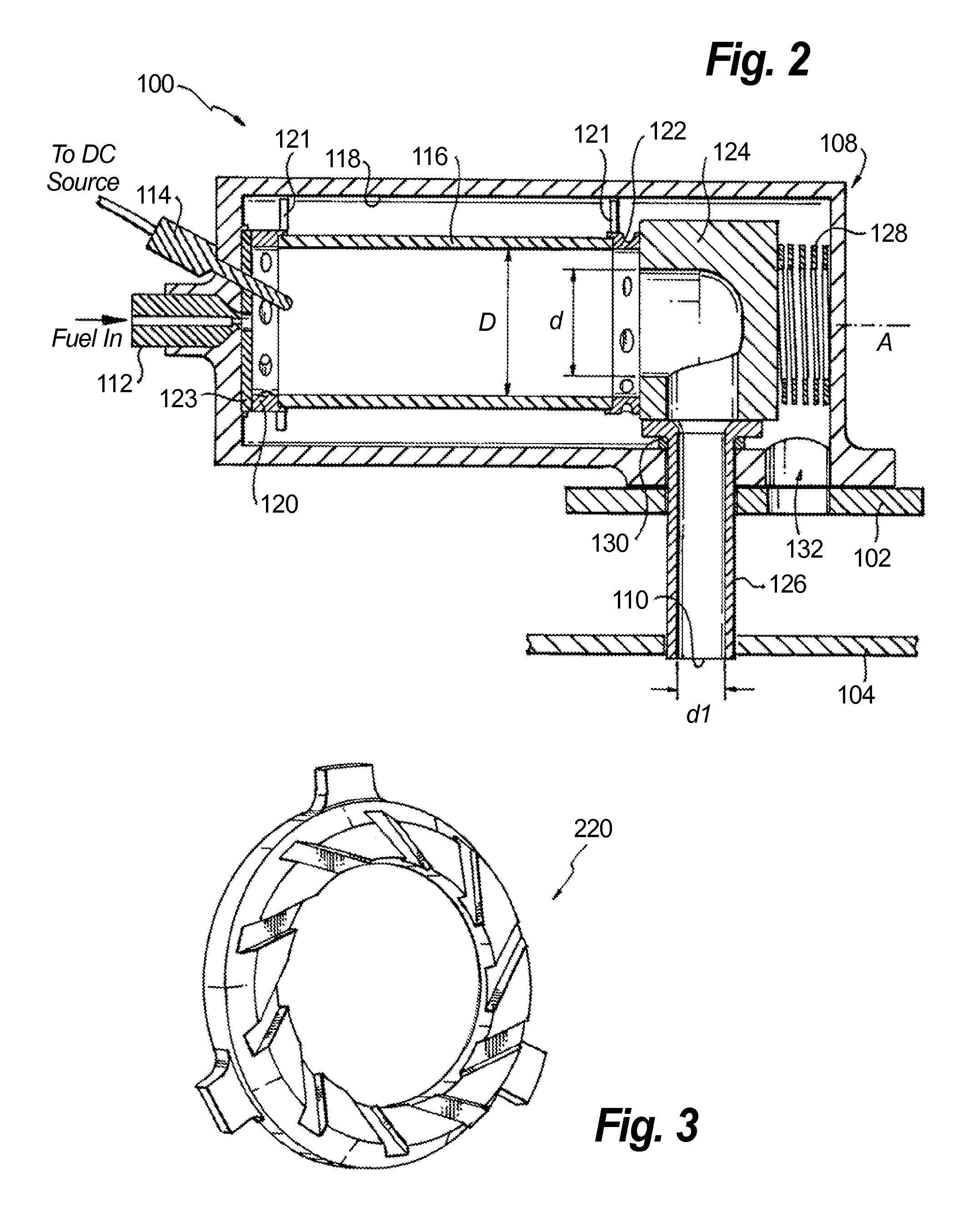Continuous ignition
a technology of continuous ignition and ignition system, which is applied in the ignition of burners, ignition devices of turbine/propulsion engines, lighting and heating apparatuses, etc., can solve the problems of increasing the difficulty of ignition, reducing the flame strength of the ignition device, so as to achieve the effect of increasing the flame strength and decreasing the flame strength
- Summary
- Abstract
- Description
- Claims
- Application Information
AI Technical Summary
Benefits of technology
Problems solved by technology
Method used
Image
Examples
Embodiment Construction
[0022]Reference will now be made to the drawings wherein like reference numerals identify similar structural features or aspects of the subject invention. For purposes of explanation and illustration, and not limitation, a partial view of an exemplary embodiment of an ignition system is shown in FIG. 1 and is designated generally by reference character 100. Other embodiments of ignition systems, or aspects thereof, are provided in FIGS. 2-7, as will be described. The systems and methods of the invention can be used, for example, to employ liquid fuel injection to improve the ignition performance of advanced engines. The systems and methods can be used in new engines, as well as to retrofit to existing engines to replace traditional ignition systems, for example.
[0023]In FIG. 1, ignition system 100 is shown mounted to a high pressure casing 102 outboard of a combustor 104 of a gas turbine engine. Compressor discharge air enters the high pressure casing on the right hand side of FIG. ...
PUM
 Login to View More
Login to View More Abstract
Description
Claims
Application Information
 Login to View More
Login to View More - R&D
- Intellectual Property
- Life Sciences
- Materials
- Tech Scout
- Unparalleled Data Quality
- Higher Quality Content
- 60% Fewer Hallucinations
Browse by: Latest US Patents, China's latest patents, Technical Efficacy Thesaurus, Application Domain, Technology Topic, Popular Technical Reports.
© 2025 PatSnap. All rights reserved.Legal|Privacy policy|Modern Slavery Act Transparency Statement|Sitemap|About US| Contact US: help@patsnap.com



